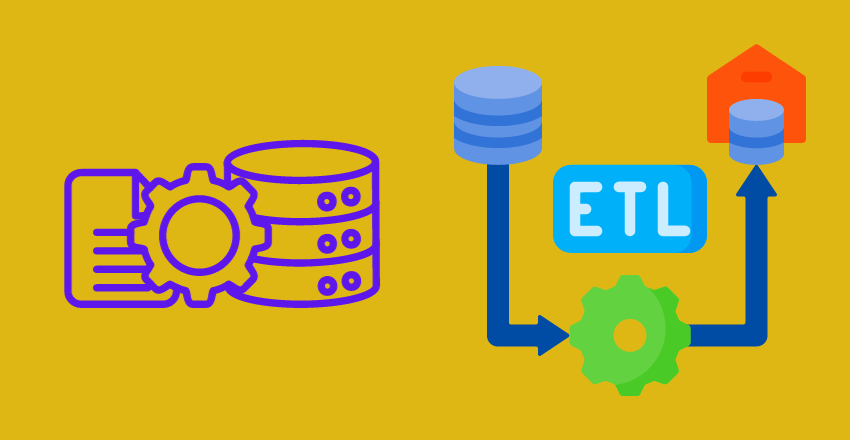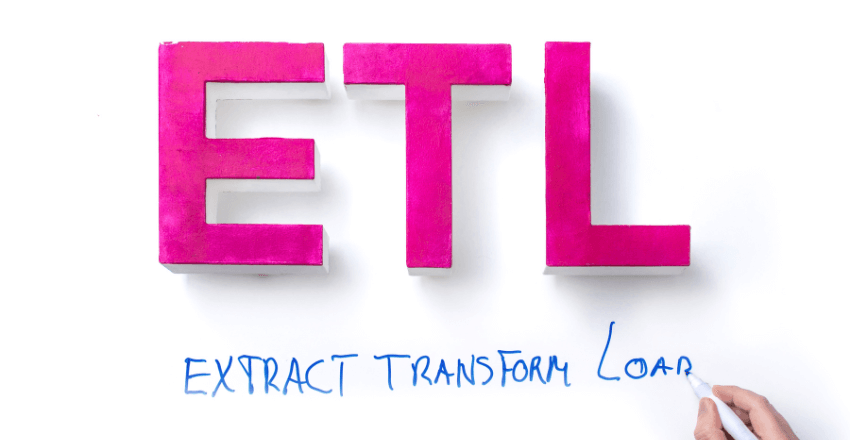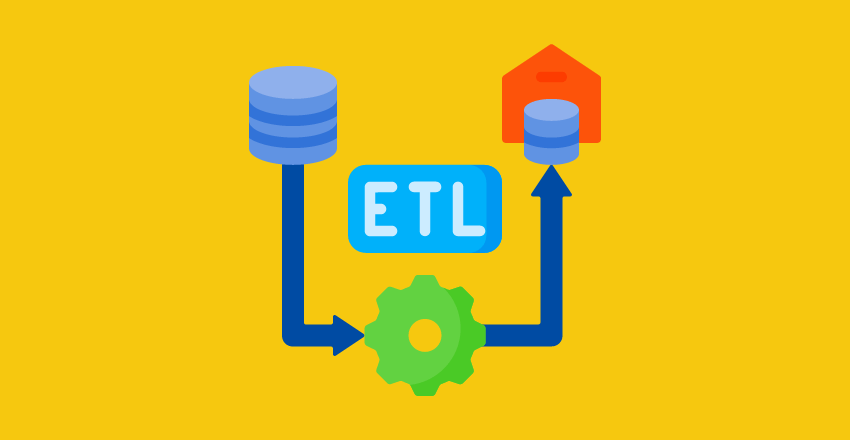
ETL in Data Transformation streamlines the journey from raw data to actionable insights. Simplify integration, ensure accuracy, and expedite decision-making with a structured, automated process.
Data transformation is a vital process that every organization needs to undertake to stay competitive in today’s data-driven landscape.
This process involves converting data from one format to another and ensuring its accuracy and consistency. ETL (Extract, Transform, Load) is a methodology that has proved to be highly effective in data transformation as it streamlines processes and improves efficiency.
Key Takeaways:
- ETL is an effective methodology for data transformation that involves Extracting data from various sources, transforming it to fit the desired format, and Loading it into a target database or data warehouse.
- By outsourcing SQL Developers from HireSQL, organizations can leverage ETL to streamline data integration and establish an efficient data pipeline.
- ETL enhances efficiency by automating repetitive tasks, ensures data accuracy through data validation and cleansing, and enables valuable insights by combining and analyzing data from multiple sources.
The Importance of Data Transformation
Data transformation has become crucial in today’s business landscape. Organizations are generating a vast amount of data from various sources, and to make sense of this data, it must be integrated, organized, and analyzed effectively.
That’s where Extract, Transform, Load (ETL) comes in. ETL is a process of integrating data from different sources, transforming it to fit into a specific format, and then loading it into a target database or data warehouse.
Upon the implementation of ETL, businesses can streamline their data processes, improve efficiency, and drive innovation. By integrating data from various sources, organizations ensure that their analysis is based on the most accurate and up-to-date data available.
Furthermore, ETL facilitates data integration, which ensures that data is presented in a standardized format, making it easier for businesses to analyze.
Efficiency and innovation are other key benefits of ETL. By automating repetitive tasks, ETL saves time and resources and reduces the chance of human error, thereby improving overall efficiency.
Moreover, ETL also enables businesses to derive valuable insights by combining and analyzing data from multiple sources, which is essential for making informed business decisions.
Overall, data transformation through ETL is essential in today’s business world. It ensures data integration, standardization, and accuracy, driving efficiency, and innovation.
Understanding ETL: Extract, Transform, Load

ETL, short for Extract, Transform, Load, is the process of extracting data from various sources, transforming it to fit the desired format, and loading it into a target database or data warehouse.
This process is crucial in data transformation as it enables businesses to integrate data from multiple sources, improving data quality, and enabling effective analysis and decision-making.
The first step in the ETL process is data extraction
During this phase, data is collected from various sources, including databases, APIs, flat files, and spreadsheets. The extracted data is then stored in a staging area that acts as a temporary storage location before being transformed.
The primary aim of data extraction is to ensure that all required data is captured and stored in a usable format.
The second step is data transformation
During this phase, data is converted from its original format to the desired format. This process involves data cleaning, data validation (DV), data mapping, and data aggregation.
Data cleaning is done by removing or correcting inconsistencies, duplicates, and errors in the data. DV is done to ensure that the data conforms to pre-defined rules and standards. Data mapping is done to match the data from different sources to the desired target, while data aggregation involves combining data from multiple sources into a single target.
The final step in the ETL process is data loading
During this phase, the transformed data is loaded into the target database or data warehouse. This process involves the use of SQL statements to create tables in the target database or data warehouse and then inserting the transformed data into these tables.
An example of data transformation using SQL code is:
SELECT column1, column2, column3 FROM SourceTable WHERE column3 = 'value' ORDER BY column2 ASC INTO TargetTable
ETL is a crucial process in data transformation, and it requires a high level of technical expertise to implement effectively. HireSQL is a trusted outsourcing company based in South America, specialized in providing dedicated SQL Developers proficient in English who can help organizations achieve successful ETL implementation and streamline their data transformation processes.
Benefits of ETL in Data Transformation

In today’s data-driven business landscape, efficient data transformation is critical for organizations to drive innovation and stay ahead of the competition.
ETL (Extract, Transform, Load) is a process that plays a crucial role in streamlining data transformation, enabling insights, and improving accuracy and efficiency. Here are the key benefits of utilizing ETL for data transformation:
- Efficiency: ETL automates repetitive tasks, enabling data to be processed faster and more accurately. This frees up valuable time for IT teams to focus on higher-priority tasks.
- Accuracy: ETL ensures data accuracy through data validation and cleansing techniques. This reduces the risk of errors and inconsistencies in data processing.
- Insights: ETL enables the consolidation and analysis of data from multiple sources, providing valuable insights for better decision-making.
ETL can significantly improve the efficiency and effectiveness of data transformation, providing organizations with a competitive advantage in today’s data-driven world.
Here is an example of how ETL can be used:
A retail organization requires daily updates on the sales data from its various stores. The sales data from each store is stored separately in different formats.
By using an ETL process, the sales data can be extracted from each source, transformed into a standardized format, and loaded into a central database. This allows the retail organization to gain insights into their sales performance easily.
Using ETL can have a significant impact on an organization’s bottom line through improved operational efficiency, better decision-making, and faster time-to-insights.
ETL Tools and Technologies

Choosing the right ETL tools and technologies is critical to ensuring seamless data integration and efficient data pipelines. With an array of options available in the market, it’s essential to consider specific business requirements before making a decision.
In light of this, popular ETL platforms and frameworks such as Talend, Apache NiFi, Microsoft SQL Server Integration Services (SSIS), and Oracle Data Integrator (ODI) emerge as substantial choices. These tools offer features such as data mapping, data validation, and data transformation capabilities that simplify the ETL process.
Furthermore, cloud-based ETL tools such as Amazon Web Services (AWS) Data Pipeline, Microsoft Azure Data Factory, and Google Cloud Dataflow provide additional scalability and flexibility advantages. These cloud-based solutions enable seamless integration with other cloud services and support real-time data integration.
Additionally, machine learning-driven ETL tools such as Google Cloud Dataprep and Talend Data Fabric offer advanced data transformation capabilities. They use machine learning algorithms to automatically prepare and clean data for analysis, saving valuable time and resources.
At HireSQL, we provide dedicated SQL developers with expertise in ETL tools and technologies. Our developers are proficient in English and have experience in implementing ETL projects for various industries.
Example SQL code:
CREATE TABLE customers ( customer_id INT, first_name VARCHAR(50), last_name VARCHAR(50), email VARCHAR(255) );
Best Practices for ETL Implementation

Effective ETL implementation is critical for ensuring successful data transformation. Here are some best practices to follow:
Data Profiling and Cleansing
Prior to data transformation, it is crucial to profile and cleanse the data. This involves identifying incomplete or incorrect data, removing duplicates, and rectifying other data integrity issues. Automated data profiling and cleansing can help improve data quality and minimize errors during transformation.
Data Mapping and Transformation Techniques
Accurate data mapping and transformation techniques are essential for ensuring that the target data accurately reflects the original data.
An efficient approach is to use mapping templates or pre-built transformations that can be customized according to specific business requirements. SQL code examples can be used to illustrate how data transformation is performed.
Error Handling and Logging
Effective error handling and logging mechanisms are crucial for identifying and rectifying errors during the ETL process. It is important to establish a system that logs all errors and provides alerts when issues arise. This can help prevent data quality issues and ensure that the ETL process is running smoothly.
Performance Optimization
Optimizing ETL performance can help improve the speed and overall efficiency of the data transformation process. Techniques such as data partitioning, parallel processing, and indexing can be used to optimize performance. It is essential to continuously monitor and fine-tune the ETL process to ensure optimal performance.
Data Validation and Testing
Thoroughly validating and testing the ETL process is crucial for identifying and resolving issues before the process goes live. This involves testing the ETL process with sample data and comparing the results to the expected output.
It is essential to ensure that the ETL process meets business requirements, data quality standards, and regulatory compliance.
Challenges and Solutions in ETL

Implementing ETL processes comes with several challenges that organizations must be prepared to address. Below are some common challenges and effective solutions that can help organizations mitigate risks and ensure seamless ETL operations:
| Challenges | Solutions |
|---|---|
Ensuring Data Quality:Data extracted from various sources may have inconsistencies, duplicates, or inaccuracies, compromising the integrity of the data. | Regular Data Profiling and Cleansing: Organizations must deploy a robust data profiling and cleansing process to identify and eliminate data quality issues. This process can include data validation, data normalization, and data standardization techniques that help ensure data quality. |
Scalability:As the volume of data sources increases, ETL operations can become more complex and time-consuming, significantly impacting performance. | Partitioning and Parallel Processing: Organizations can leverage partitioning and parallel processing techniques to improve ETL performance. Partitioning involves breaking down data into smaller, more manageable chunks, while parallel processing enables simultaneous execution of multiple ETL components to speed up processing. |
Data Lineage:Organizations must be able to track data movement across the ETL pipeline to ensure data accuracy and compliance with internal and external regulations. | Implementing a Robust Data Lineage Mapping Process: Organizations can use data lineage mapping techniques that provide visibility into data flow across the ETL pipeline. This process helps identify potential data issues and mitigate risks associated with data lineage compliance. |
Data Security:ETL processes may expose sensitive data to vulnerabilities or data breaches, leading to potential loss, theft, or misuse of data. | Implementing Robust Security Protocols: Organizations can deploy strict security protocols that help protect against data breaches. This can include access controls, data encryption, data masking, and regular security audits to identify and remediate security gaps. |
By addressing these challenges proactively, organizations can ensure smooth ETL operations and maximize the potential of data integration and transformation.
An SQL code example that illustrates the implementation of ETL can be:
UPDATE target_db
SET col1 = source_db.col1, col2 = source_db.col2, col3 = source_db.col3
FROM source_db
WHERE target_db.id = source_db.id;
This code example highlights the transformation and loading steps of the ETL process, where data is extracted from a source database and transformed to fit the target database’s format.
Finding the Right SQL Developers for ETL
Effective ETL implementation requires expertise in SQL and data transformation. It is crucial to find the right SQL developers who possess the necessary skills and experience in ETL and data integration. Outsourcing SQL developers can be an excellent way to access top talent while saving time and costs.
HireSQL is an outsourcing company based in South America that provides dedicated SQL developers proficient in English. Their developers have a wealth of experience in ETL and data transformation and can help organizations streamline processes, improve efficiency, and drive innovation.
By outsourcing SQL developers from HireSQL, businesses can focus on their core competencies while ensuring successful ETL implementation. The company’s developers are fully committed to their clients’ success and work diligently to meet their requirements and goals.
In addition, if you are in search of the right SQL developers for your ETL requirements, outsourcing through HireSQL can be an excellent solution.
You can rest assured that your ETL process will be in capable hands, allowing you to leverage the full potential of data transformation for your business needs.
Conclusion
As technology continues to transform the business landscape, data transformation through ETL has become essential for staying competitive. Effective ETL implementation leads to increased efficiency, improved accuracy, and valuable insights. It helps organizations streamline processes and gain a competitive edge through innovation.
Outsourcing dedicated SQL Developers from HireSQL, a company based in South America, can ensure successful ETL implementation and maximize the potential of data transformation. HireSQL Developers are proficient in English and possess the skills and expertise required for ETL and data integration.
Investing in ETL today paves the way for a data-driven future. Stay ahead of the curve by embracing the potential of data transformation through ETL.
External Resources
1. “Data Lineage” – https://www.ibm.com/topics/data-lineage
2. “SQL Server Central” – https://www.sqlservercentral.com/
3. “ETL Tools Info” – https://etl-tools.info/
These res provide further insights into the concept of ETL and data transformation.
FAQ

Q: What is ETL?
A: ETL stands for Extract, Transform, Load. It is a process used in data transformation to extract data from various sources, transform it to fit a desired format, and load it into a target database or data warehouse.
Q: Why is data transformation important?
A: Data transformation is essential in today’s business landscape as it enables the integration of data from different sources, improves data quality, and facilitates effective analysis and decision-making.
Q: What are the main steps of the ETL process?
A: The ETL process consists of three main steps: extraction, transformation, and loading. Data is extracted from different sources, transformed to fit the desired format, and then loaded into a target database or data warehouse.
Q: What are the benefits of using ETL?
A: ETL offers several benefits in data transformation, including enhanced efficiency through automation, improved data accuracy through validation and cleansing, and the ability to gain valuable insights by combining and analyzing data from multiple sources.
Q: What are some popular ETL tools and technologies?
A: There are various ETL tools and technologies available in the market for seamless data integration and establishing efficient data pipelines. Some popular options include Informatica PowerCenter, Microsoft SQL Server Integration Services (SSIS), and Talend.
Q: What are the best practices for ETL implementation?
A: Some best practices for effective ETL implementation include data profiling and cleansing, using appropriate data mapping and transformation techniques, implementing error handling and logging mechanisms, and optimizing performance for efficient operations.
Q: What are the common challenges in ETL implementation?
A: Common challenges in ETL implementation include ensuring data quality, scalability, data lineage management, and data security. These challenges can be addressed through proactive measures and effective solutions.
Q: How can I find the right SQL Developers for ETL implementation?
A: When looking for SQL Developers for ETL implementation, it is important to consider their expertise and skills in the context of data transformation. Outsourcing SQL Developers from companies like HireSQL, which provides dedicated SQL Developers proficient in English, can be a reliable option.
James is a highly acclaimed author renowned for his extensive experience in the realm of data development and architecture, offering valuable insights to the data industry through his compelling literary works. Residing in the charming city of Oxford, he embarked on an illustrious academic journey at Oxford University, where he delved into the intricate world of computer science. This foundation served as the catalyst for his exceptional career.
After completing his studies, James embarked on a professional path that led him to renowned technology giants. He first honed his skills as a data developer at Microsoft, where he showcased his prowess in designing and implementing robust data solutions. His innovative contributions played a pivotal role in enhancing data management processes, solidifying his reputation as a meticulous and forward-thinking professional.
Seeking new challenges and broader horizons, James embarked on a transformative journey at Amazon Web Services (AWS). In this influential position, he leveraged his profound understanding of data architecture to shape cutting-edge solutions for clients. His leadership and technical acumen enabled businesses to harness the power of cloud computing and revolutionize their data management practices, further solidifying his status as an industry authority.







